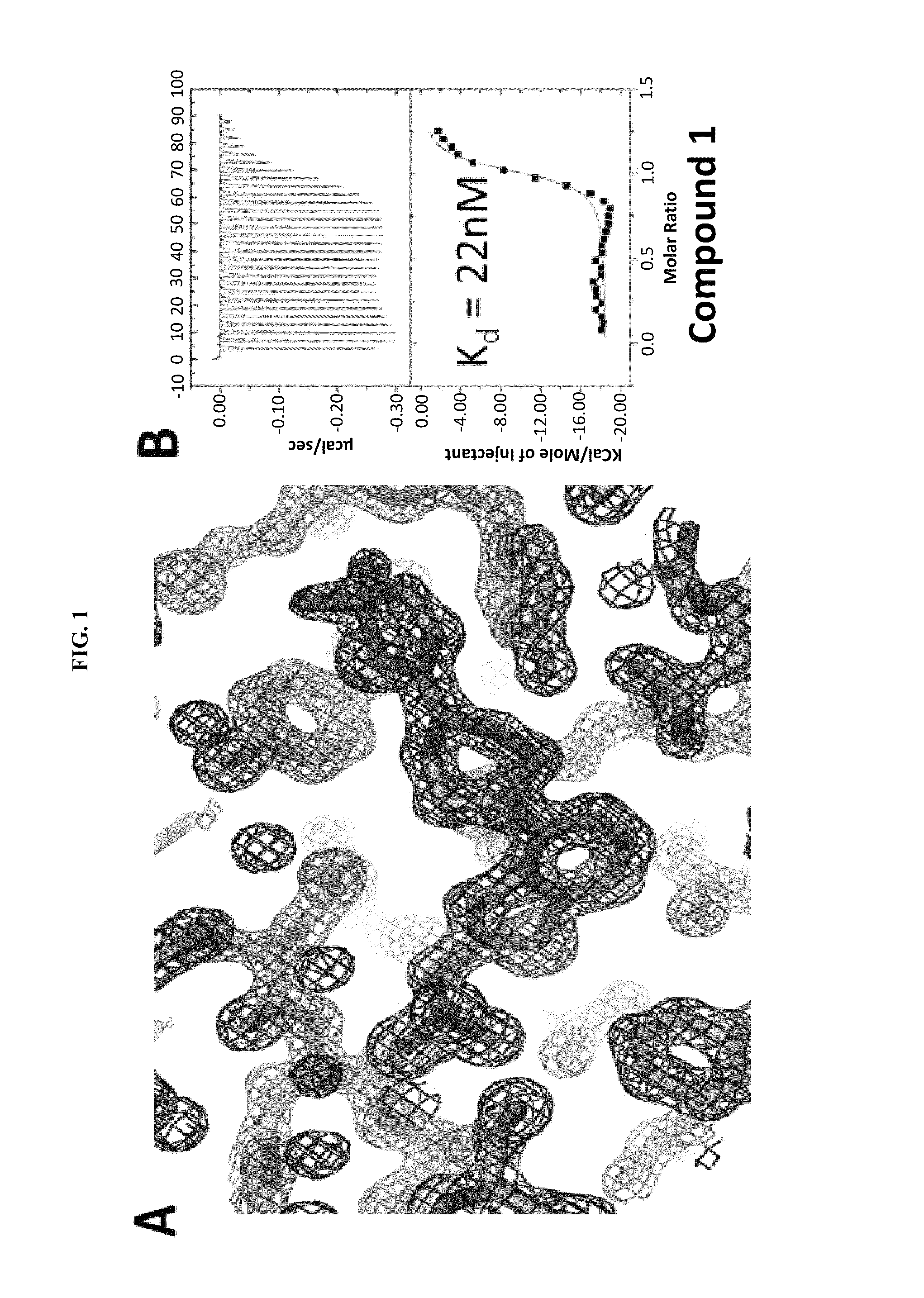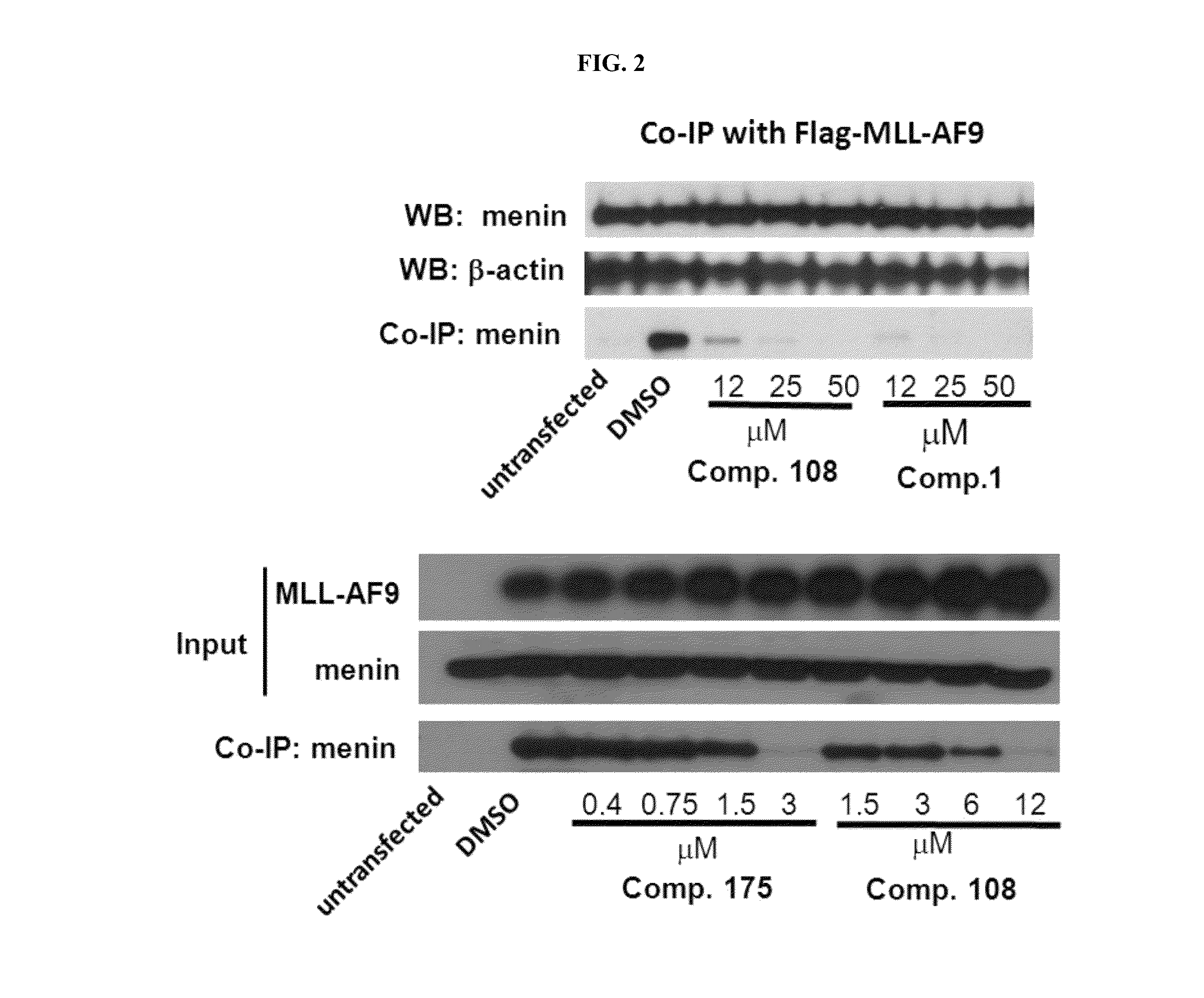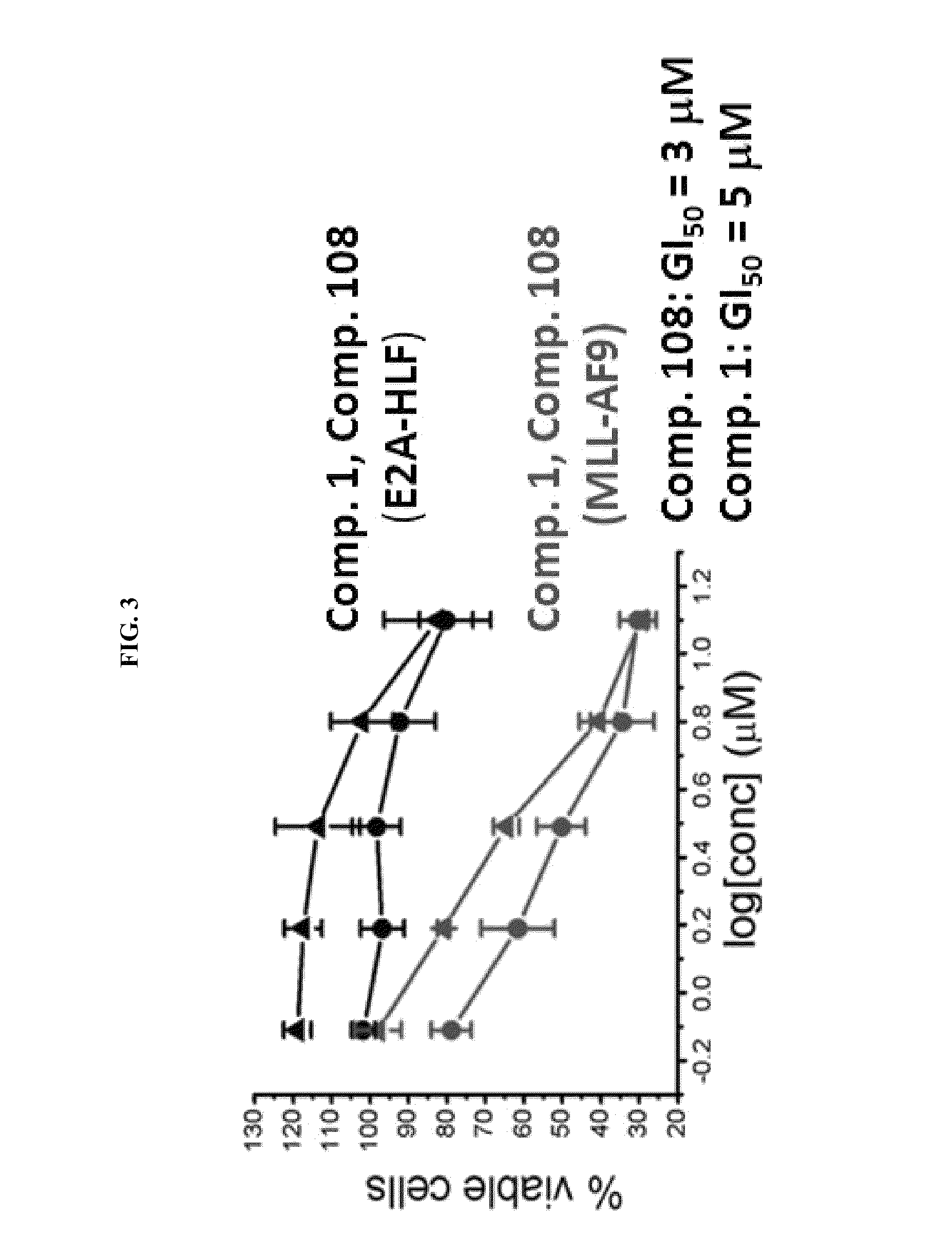Compositions comprising thienopyrimidine and thienopyridine compounds and methods of use thereof
a technology which is applied in the field of thienopyrimidine and thienopyrimidine class compounds, can solve problems such as leukemia developmen
- Summary
- Abstract
- Description
- Claims
- Application Information
AI Technical Summary
Benefits of technology
Problems solved by technology
Method used
Image
Examples
example 1
General Methods of Compounds Synthesis
[0184]Compounds of Subscaffold 1 can be prepared according to the following general methods (Scheme 1 and 2).
[0185]
[0186]
[0187]Compounds of Subscaffold 2 can be prepared according to the following general methods (Scheme 3 and 4).
[0188]
[0189]
[0190]Compounds of Subscaffold 3 can be prepared according to the following general methods (Scheme 5 and 6).
[0191]
[0192]
[0193]Compounds of Subscaffold 4 can be prepared according to the following general methods (Scheme 7 and 8).
[0194]
[0195]
[0196]Compounds of Subscaffold 5 can be prepared according to the following general methods (Scheme 9 and 10).
[0197]
[0198]
[0199]Compounds of Subscaffold 6 can be prepared according to the following general methods (Scheme 11 and 12).
[0200]
[0201]
example 2
Representative Procedure for the Synthesis of Compounds from Subscaffold 1
[0202]
[0203]4,4,4-trifluorobuteraldehyde 5 g (39.6 mmol), cyanoacetamide 3.36 g (39.6 mmol) and sulfur 1.28 g (39.6 mmol) was stirred in 40 mL of DMF in the presence of 6.7 mL of triethylamine for 24 hs. Solvent was evaporated under reduced pressure and the residue was loaded on silica gel column and eluted with pure ethyl acetate to afford 8.4 g of 2-amino-5-(2,2,2-trifluoroethyl)thiophene-3-carboxamide. 1H NMR CDCl3 (300 MHz): 7.97 (s, 1H), 6.76 (s, 1H), 3.59 (br, 2H), 3.35 (q, 2H, J 10.3 Hz), 2.98 (s, 1H), 2.88 (s, 1H). 13C NMR CDCl3 (75 MHz): 168.6, 125.6, 124.3, 111.7, 107.3, 36.8, 34.7 (q, J31.4 Hz).
[0204]
[0205]8.4 g of 2-amino-5-(2,2,2-trifluoroethyl)thiophene-3-carboxamide was refluxed in a mixture of 28 mL of triethylorthoformate and 20 mL of acetic acid for 4 hs. Solvents were removed under reduced pressure and the residue was triturated hexane-ethyl acetate mixture (1:1). The solid was filtered off ...
example 3
Representative Procedure for the Synthesis of Compounds from Subscaffold 2
[0212]
[0213]To a solution of 2 g of 4-(bromomethyl)phenyl acetic acid in 20 mL of methanol was added 0.2 mL of TMSCl and mixture was stirred for 2 hrs. The solvent was removed in vacuo and residue was twice redissolved in MeOH and reconcentrated to give desired product, which was used in the xet step without purification. Bromoester was refluxed in 50 mL of water in the presence of 2.5 g of sodium bisulfilte for 3 hs. After cooling down the precipitate was filtered off and dried on the funnel overnight. The solid was suspended in 15 mL of POCl3 and 1 g of PCl5 was slowly added to a suspension. The mixture stirred for 3 hs at RT. A mixture was concentrated and 10 mL of conc. ammonia in water was slowly added to 0° C., redissolved compound in 30 mL of acetonitrile. After stirring for 12 hs at RT, a mixture was concentrated, partitioned between ethyl acetate and saturated sodium carbonate solution. Organic layer ...
PUM
| Property | Measurement | Unit |
|---|---|---|
| structure | aaaaa | aaaaa |
| compositions | aaaaa | aaaaa |
| composition | aaaaa | aaaaa |
Abstract
Description
Claims
Application Information
 Login to View More
Login to View More - Generate Ideas
- Intellectual Property
- Life Sciences
- Materials
- Tech Scout
- Unparalleled Data Quality
- Higher Quality Content
- 60% Fewer Hallucinations
Browse by: Latest US Patents, China's latest patents, Technical Efficacy Thesaurus, Application Domain, Technology Topic, Popular Technical Reports.
© 2025 PatSnap. All rights reserved.Legal|Privacy policy|Modern Slavery Act Transparency Statement|Sitemap|About US| Contact US: help@patsnap.com



